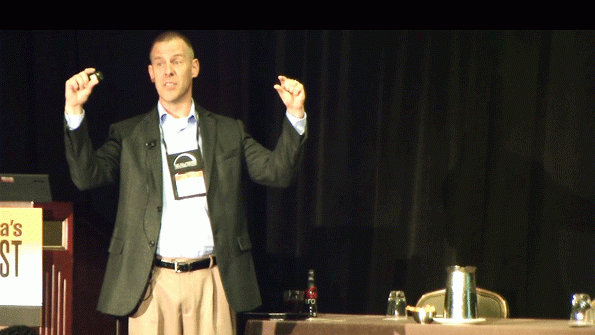September 2013 - WOOD PROCESSING MACHINERY 2013
THE BIGGEST TRADE PLATFORM OF WOOD AND FURNITURE INDUSTRIES IN EURASIA, WOOD PROCESSING MACHINERY AND INTERMOB FAIRS WILL BE HELD ON OCTOBER 5-9 AT TUYAP
The most important and wide-ranging meeting of the sector, Wood Processing Machinery- The 26th International Wood Processing Machines, Cutting Tools and Hand Tools Fair and INTERMOB - The 16th International Furniture Side Industry, Accessories, Forestry Products and Wood Technology Fairs will present the last innovations at TUYAP.
The Most Important Meeting of Developing Wood and Furniture Industries Is Running Towards New Records in 2013
In 2012, by the attendance of 855 companies from 28 countries in 12 halls, on 98.000 m2 exhibition area, The Wood Processing Machinery and Intermob Fairs hosted 61.543 professionel visitors from 94 countries covering 6.904 international visitors during 5 days. The fairs organized by TÜYAP, provided a unique sales and marketing platform for the exhibitors with the procurement committees invited from 81 countries while coming up the expectations of the visitors with its wide-ranging profile, attendence of the leader producers and the panels which were organized about the current subjects of the sector.
Setting a higher standard for 2013, the fairs will be held by the attendence of around 900 company and company representatives from 30 countries and are expected to host 65.000 visitors from around 100 countries by the support of overseas promotion activities.
New Technologies, New Products, New Markets, New Cooperations…
By expecting to be one of the global trade centers of the world in future, Turkey is targeting to have a bigger market share in furniture side, wood products and wood processing machinery products’ industries in the scope of its geographical location, dynamic economical situation, strength on the economies of other close countries and developing potential. While the fairs are providing all exhibitors to catch the advantage of their principal targets in the related sectors, the exhibitors will take the advantage of meeting their competitors, know-how exchanging, presenting their brands- last products and services, leading their R&D activities, building new business cooperations and as a result, getting a bigger market share.
Being an effective trading platform and covering procurement committees organized by TUYAP- for the visitors coming from all over the world- the fairs are also providing access to new markets in order to have new business contacts.
The Event Programmes Provide Know-how Exchange
Wood Processing Machinery and Intermob Fairs will be an effective know-how exchange center by the event programmes covering the sector’s agenda for being able to evaluate the current competitive situations and new technologies in the market.
In this scope, being one of the most important meeting platforms in Eurasia, the fairs are providing an effective platform for the authorized people of the companies, scientists, academicians, public authorities and journalists to share their thoughts and knowledge.
We Are Building New Overseas Markets
In 2013, Wood Processing Machinery and Intermob fairs - the biggest international platform of the wood procesisng machineries, furniture accessories, wood products and wood technology industries - once more, are providing access to new markets and private business cooperation advantages. Through the aim of creating a profitable sales and marketing platform for domestic and foreign exhibitors, the procurement committees’ organizations and international promotion activities have been realized.
By the support of overseas offices and representative network of TUYAP, procurement committees have been organized and reached to all potential purchasers as commercial councellors, trade and industry chambers, businessmen councils, producer-exporter-importer associations of the wood and furniture sectors and bureaucrats who have authority of purchasing for community.
Additionally, through the consulates, the leading companies from the countries which create potential markets - as Ukrania, Russia, Balkan States, Azerbaijani, Georgia, Kazakhstan, Uzbekistan, Turkic Republics- have been contacted and invited to the fairs by TUYAP.
During 2013, in the content of the cooperations which have been built with the press that feels the pulse of the sector, the promotion activities have been realized in the related countries. The editors from the target countries will be hosted and reflect their impressions to the international platform. Having a good prestige in the sector, the fairs were visited by visitors from 93 countries last year and they will add new countries to the portfolio and achieve to create new markets for the exhibitors.
Fairs Are Strengthening The Sector While Boosting The Market
Being the biggest meetig of the sector, Wood Processing Machinery & Intermob bring the sector professionals together from all corners of Turkey, set going the sector and provide commercial profit to all exhibitors and visitors.
Wood Processing Machinery and Intermob 2013 present all innovations of the sector under the same roof. The fairs make a significant contribution to the economy by offering opportunities to the companies requiring to- increase their production capacities- purchase machinery & accessories and cover the demand of the market.
Procurement Committees From All Industrially Developed Cities
During the fairs, by the invitation of TUYAP, the chairmen and members of NGO’s, the authorized people of the companies which are operating in the sectors as furniture production & accessories trade, architecture, interior architecture, decoration and wood processing will be hosted. Within the context of the procurement committies, it is provided 7000 sector professionals from 48 cities in Turkey to visit the fairs.
The Most Important Meeting of Developing Wood and Furniture Industries Is Running Towards New Records in 2013
In 2012, by the attendance of 855 companies from 28 countries in 12 halls, on 98.000 m2 exhibition area, The Wood Processing Machinery and Intermob Fairs hosted 61.543 professionel visitors from 94 countries covering 6.904 international visitors during 5 days. The fairs organized by TÜYAP, provided a unique sales and marketing platform for the exhibitors with the procurement committees invited from 81 countries while coming up the expectations of the visitors with its wide-ranging profile, attendence of the leader producers and the panels which were organized about the current subjects of the sector.
Setting a higher standard for 2013, the fairs will be held by the attendence of around 900 company and company representatives from 30 countries and are expected to host 65.000 visitors from around 100 countries by the support of overseas promotion activities.
New Technologies, New Products, New Markets, New Cooperations…
By expecting to be one of the global trade centers of the world in future, Turkey is targeting to have a bigger market share in furniture side, wood products and wood processing machinery products’ industries in the scope of its geographical location, dynamic economical situation, strength on the economies of other close countries and developing potential. While the fairs are providing all exhibitors to catch the advantage of their principal targets in the related sectors, the exhibitors will take the advantage of meeting their competitors, know-how exchanging, presenting their brands- last products and services, leading their R&D activities, building new business cooperations and as a result, getting a bigger market share.
Being an effective trading platform and covering procurement committees organized by TUYAP- for the visitors coming from all over the world- the fairs are also providing access to new markets in order to have new business contacts.
The Event Programmes Provide Know-how Exchange
Wood Processing Machinery and Intermob Fairs will be an effective know-how exchange center by the event programmes covering the sector’s agenda for being able to evaluate the current competitive situations and new technologies in the market.
In this scope, being one of the most important meeting platforms in Eurasia, the fairs are providing an effective platform for the authorized people of the companies, scientists, academicians, public authorities and journalists to share their thoughts and knowledge.
We Are Building New Overseas Markets
In 2013, Wood Processing Machinery and Intermob fairs - the biggest international platform of the wood procesisng machineries, furniture accessories, wood products and wood technology industries - once more, are providing access to new markets and private business cooperation advantages. Through the aim of creating a profitable sales and marketing platform for domestic and foreign exhibitors, the procurement committees’ organizations and international promotion activities have been realized.
By the support of overseas offices and representative network of TUYAP, procurement committees have been organized and reached to all potential purchasers as commercial councellors, trade and industry chambers, businessmen councils, producer-exporter-importer associations of the wood and furniture sectors and bureaucrats who have authority of purchasing for community.
Additionally, through the consulates, the leading companies from the countries which create potential markets - as Ukrania, Russia, Balkan States, Azerbaijani, Georgia, Kazakhstan, Uzbekistan, Turkic Republics- have been contacted and invited to the fairs by TUYAP.
During 2013, in the content of the cooperations which have been built with the press that feels the pulse of the sector, the promotion activities have been realized in the related countries. The editors from the target countries will be hosted and reflect their impressions to the international platform. Having a good prestige in the sector, the fairs were visited by visitors from 93 countries last year and they will add new countries to the portfolio and achieve to create new markets for the exhibitors.
Fairs Are Strengthening The Sector While Boosting The Market
Being the biggest meetig of the sector, Wood Processing Machinery & Intermob bring the sector professionals together from all corners of Turkey, set going the sector and provide commercial profit to all exhibitors and visitors.
Wood Processing Machinery and Intermob 2013 present all innovations of the sector under the same roof. The fairs make a significant contribution to the economy by offering opportunities to the companies requiring to- increase their production capacities- purchase machinery & accessories and cover the demand of the market.
Procurement Committees From All Industrially Developed Cities
During the fairs, by the invitation of TUYAP, the chairmen and members of NGO’s, the authorized people of the companies which are operating in the sectors as furniture production & accessories trade, architecture, interior architecture, decoration and wood processing will be hosted. Within the context of the procurement committies, it is provided 7000 sector professionals from 48 cities in Turkey to visit the fairs.




























